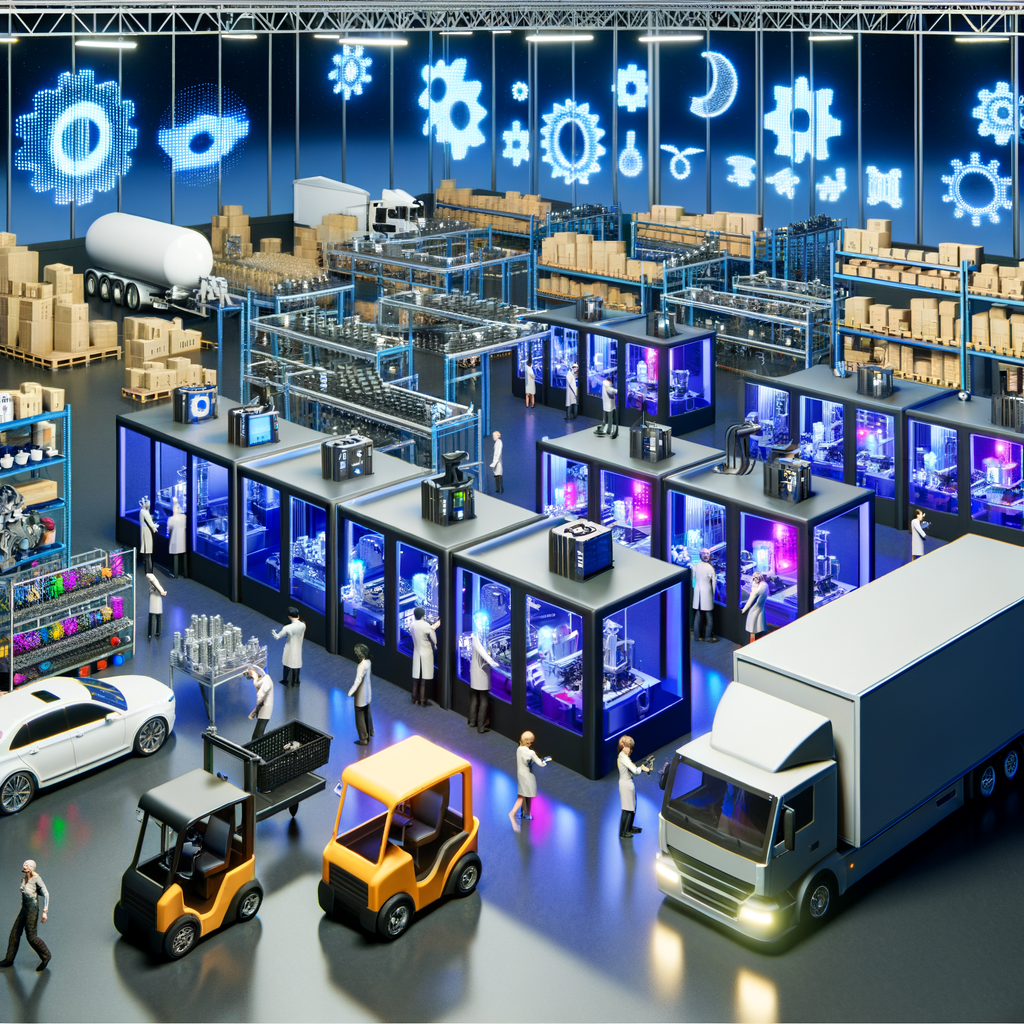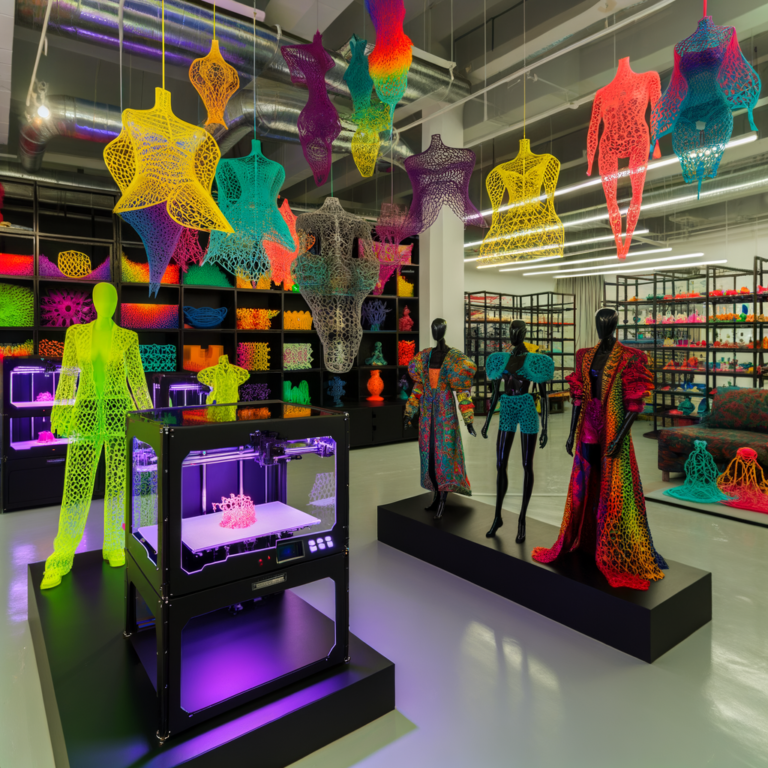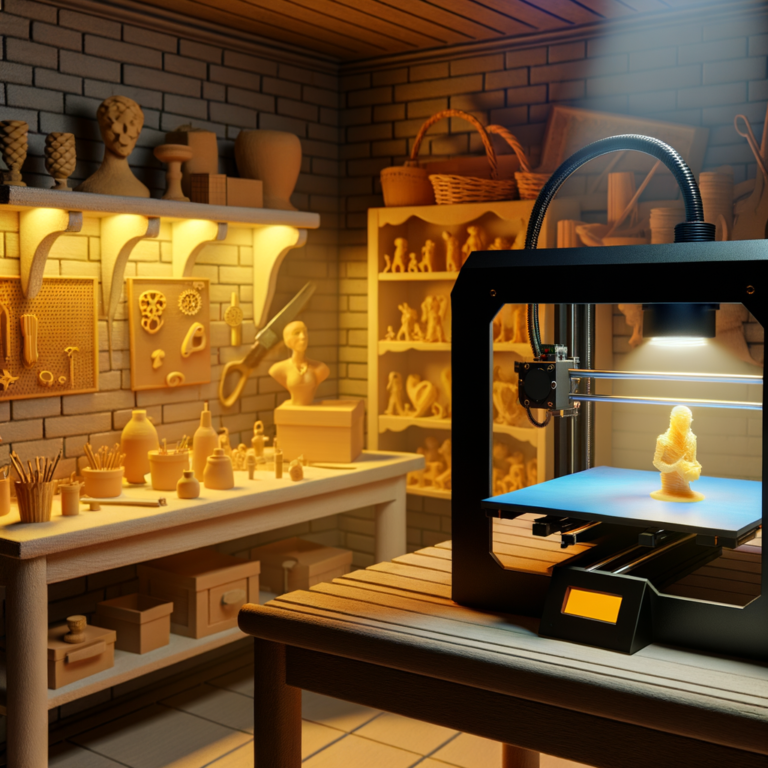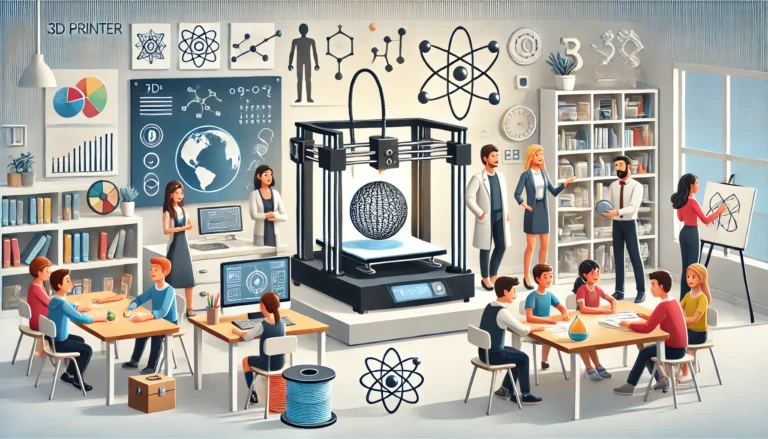The Impact of 3D Printing on Supply Chain Management
Introduction
Alright, buckle up! We're diving into the world of 3D printing, a technology that’s been popping up all over the place like mushrooms after a rainy day. If you've ever seen those futuristic movies where someone presses a button and, voilà, out pops a fully formed object, you're pretty close to understanding the magic of 3D printing. But hold up, it's not just for sci-fi anymore. This tech is making serious waves in real-world industries—from healthcare to aerospace and everything in between.
Now, let's switch gears and talk about supply chain management. Imagine it as the backbone of any business, the unsung hero that ensures products get from point A to point B without a hitch. It’s all about planning, sourcing, making, and delivering—the whole shebang that keeps businesses running smoothly and customers happy. Without a well-oiled supply chain, even the coolest products can end up lost in a warehouse somewhere, gathering dust.
So, what happens when you throw 3D printing into the supply chain mix? Well, that's where things get really interesting! We’re talking about a revolution in how goods are made and moved, a shake-up that could change everything from production speeds to cost savings. In this article, we'll explore this fascinating intersection of 3D printing and supply chain management. Get ready to see how this tech is not just changing the game—it’s rewriting the rulebook!
What is 3D Printing?
Alright, picture this: you're watching a sci-fi movie, and someone magically creates an object out of thin air. Cool, right? Well, that's kind of what 3D printing is, minus the magic wand. It all started back in the '80s when the first 3D printers were invented. Back then, it was more of a novelty—a neat trick that could print small plastic models. Fast forward to today, and we're talking about printing everything from car parts to human organs. Yep, you read that right. Human organs. Mind-blowing, huh?
So, how does this modern marvel work? It’s all about layers. Imagine making a sandwich, but instead of turkey and cheese, you're stacking up layers of material like plastic, metal, or even chocolate (yes, chocolate!). A 3D printer takes a digital blueprint and builds up the object layer by layer until, voilà, your creation is complete. This process is known as additive manufacturing, and it’s changing the game for how we make things.
Now, who's using this wizardry? Well, just about everyone! In healthcare, doctors are printing custom prosthetics and even bones. In the automotive world, companies are crafting car parts on the fly. And in fashion, designers are printing avant-garde dresses you’d see on a runway. Even the food industry is getting in on the action with 3D-printed treats. It's like the wild west of manufacturing, with endless possibilities and opportunities for innovation.
In short, 3D printing is like that awesome gadget you never knew you needed until you had it. It's transforming industries and paving the way for a future where if you can dream it, you can print it. So, buckle up, because this is just the beginning of a very exciting journey!
The Intersection of 3D Printing and Supply Chain
Alright, let's talk about where 3D printing and supply chain management meet. It's like two old friends catching up and realizing they've got a lot to offer each other! Imagine you're running a company and suddenly, instead of waiting weeks or even months for parts to ship from halfway around the world, you can print them on demand right next to your assembly line. Pretty cool, huh?
This is exactly what's happening as 3D printing integrates into supply chain processes. Companies are now able to produce parts and products on-site, which means they can say goodbye to long shipping delays and hello to speedy production. It's like having your own personal factory that never sleeps!
The primary keyword here is "3D printing and supply chain," and it's a powerful combo. This integration is all about taking the traditional supply chain model and giving it a high-tech makeover. By doing so, companies can respond faster to market changes and customer demands. Need a new product design? No problem! Just tweak the digital model and print away.
But wait, there's more! 3D printing also opens up new doors for customization. Instead of mass-producing items that might not fit everyone's needs, businesses can offer personalized products without breaking a sweat. It's like having a magic wand for manufacturing.
And let's not forget about inventory management. With 3D printing, you only produce what you need, when you need it. This means less money tied up in inventory sitting on shelves, collecting dust. Plus, there's a bonus environmental benefit: less waste and more efficient use of materials.
So, in a nutshell, the marriage of 3D printing and supply chain is transforming the way businesses operate. It's faster, more flexible, and tailor-made for the future. As we continue to explore this exciting frontier, the possibilities are endless—and that's something worth printing out and sticking on the fridge!
Benefits of 3D Printing in Supply Chain Management
Alright, let's talk benefits! Picture this: you're a business owner, and you can make exactly what you need, when you need it. Sounds like a dream, right? Well, with 3D printing, it's more than possible—it's happening right now!
Increased Flexibility
First up, flexibility. Imagine you're in the middle of a product launch, and suddenly, there's a new trend. Panic? Not with 3D printing! This technology allows you to produce items on demand and even customize them to meet specific customer needs. Gone are the days of being stuck with a warehouse full of unsold goods. Instead, you can adapt and thrive in a world where consumer tastes change faster than your favorite TikTok trends.
Reduced Lead Times
Now, let's talk speed. 3D printing can seriously cut down on lead times. Think about traditional manufacturing, where you have to wait ages for parts to be shipped from halfway across the globe. With 3D printing, you can produce parts locally—sometimes in just hours! This means faster product development and quicker delivery times. Your customers will be happier, and you'll be the hero of your own supply chain story.
Cost Efficiency
And who doesn't love saving money? 3D printing can be a real game-changer when it comes to cost efficiency. Traditional manufacturing often involves expensive tooling and setup costs. But with 3D printing, those costs can be significantly reduced. Plus, you can say goodbye to overproduction and excessive inventory. It's like having your cake and eating it too—except the cake is made of cost savings!
Sustainability
Last but definitely not least, let's chat about the planet. Sustainability is a hot topic, and 3D printing is stepping up to the plate. By using only the materials you need, waste is minimized. Plus, local production means fewer carbon emissions from transportation. It's a win-win for your business and Mother Earth. So, not only will you feel good about your bottom line, but you'll also be doing your part to help the environment. High five!
In a nutshell, 3D printing is transforming supply chain management in ways we could only dream of a few years ago. It's flexible, fast, cost-effective, and sustainable—what's not to love? So, are you ready to print your way to success?
Challenges and Considerations
Alright, let's talk about the not-so-sunny side of things—because as much as 3D printing is the superhero of supply chain management, it does have its kryptonite. First up, quality control. Imagine a world where every product is as perfect as your grandma's cookies. Sadly, we're not quite there yet. The consistency of 3D-printed products can sometimes be as unpredictable as a cat on catnip. Ensuring each item meets quality standards is a bit of a hurdle. It's like baking a cake: you need the right ingredients and the perfect temperature, or you end up with a lopsided mess. Companies need robust quality assurance processes to keep things on track.
Then there’s the intellectual property conundrum. Picture this: you’ve designed the next big thing—a gadget so cool it could make a penguin sweat. But with 3D printing, anyone with the right file can replicate it. Protecting your designs from being copied can feel like guarding a secret recipe. So, businesses need to be savvy about copyright and patent laws, because, let’s face it, nobody wants their creative genius swiped away.
And let's not forget about the skill and technology gaps. You know how your grandma struggles with her smartphone? Well, some businesses are in the same boat with 3D printing. It’s a tech-heavy domain, and not everyone has the know-how. Companies need skilled workers who can navigate this high-tech landscape, which means investing in training and possibly upgrading their tech toolkit. Plus, staying updated with the latest advancements is key—because nobody wants to be the person still using a flip phone in the age of smartphones.
So, while 3D printing is a game-changer, it does come with its challenges. But hey, every rose has its thorns, right? With the right strategies, businesses can navigate these hurdles and unlock the full potential of 3D printing in their supply chains.
Real-World Applications and Case Studies
Alright, let's talk about some real-world superheroes of the supply chain world who have embraced 3D printing with open arms—and maybe a little bit of nervous excitement. Imagine a company that can whip up a part or product faster than you can say "supply chain bottleneck." That's the magic of 3D printing!
Take, for instance, the automotive giant, BMW. They've revved up their production line by using 3D printing for custom tools and parts. Imagine needing a specific tool that doesn’t exist on the market. Instead of waiting weeks for a supplier to deliver, BMW just prints it. This not only speeds up their processes but also saves them a pretty penny. Talk about driving efficiency!
And then there's General Electric (GE). They're not just dipping their toes into the 3D printing waters—they're doing cannonballs! GE has employed 3D printing to create complex parts for jet engines. These parts are lighter and more efficient, which, in turn, saves fuel and reduces costs. It's like giving their jets a pair of wings, quite literally!
Let's not forget about the healthcare sector, where time is often of the essence. The Mayo Clinic, for example, uses 3D printing to produce patient-specific surgical models. This allows surgeons to plan and practice complex surgeries with a model of the patient’s anatomy before making a single incision. It’s kind of like having a dress rehearsal for surgery!
And speaking of life-saving innovations, do you remember when the COVID-19 pandemic hit and there was a mad scramble for ventilators and PPE? Companies like Formlabs stepped up to the plate by 3D printing ventilator parts and face shields. This rapid response was crucial in filling the gap when traditional supply chains were overwhelmed.
These examples show us that 3D printing isn't just a flashy new toy—it's a powerful tool that can transform industries by enhancing flexibility, reducing costs, and improving efficiency. It’s like having a magic wand that turns supply chain hiccups into seamless operations. As more companies jump on the 3D printing bandwagon, we’ll undoubtedly see even more creative and impactful uses emerge. So, buckle up; the future is here, and it’s being printed right before our eyes!
Future Trends in 3D Printing and Supply Chain
Alright, let's play a little game of crystal ball gazing, shall we? But instead of looking at tea leaves, we're diving into the world of 3D printing and how it's set to transform supply chains even further. Hold onto your hats, folks, because the future is looking pretty wild!
First up, let's talk about decentralization. Imagine a world where companies don't need massive warehouses filled to the brim with inventory. Instead, they could have a network of 3D printers located closer to the customer. This means products are printed on-demand, right where they're needed. No more waiting weeks for that one part to ship halfway around the world. It's like having a magical factory just around the corner!
And speaking of magic, how about materials innovation? Right now, 3D printing uses a range of materials, but the future holds promises of groundbreaking new substances. We're talking biodegradable materials, super-strong composites, and even conductive materials for electronics. The possibilities are endless, and they could lead to products that are not only better but also more sustainable.
Now, let's chat about automation and AI. These technologies are set to buddy up with 3D printing, making the process even smarter. Imagine printers that can self-diagnose and fix issues on the fly, reducing downtime and increasing efficiency. AI could help in optimizing designs to minimize material use and maximize strength. It's like giving our printers a brain, and who doesn't want a smart gadget?
Oh, and let's not forget about personalization. As 3D printing tech becomes more advanced and affordable, the dream of mass customization becomes reality. People will be able to order products tailored specifically to their preferences, from the fit of their shoes to the design of their gadgets. It's like having a personal designer on speed dial!
Lastly, while we're dreaming big, consider the potential for supply chain transparency. With blockchain technology, every step of the 3D printing process can be tracked and verified, ensuring authenticity and quality. This could be a game-changer for industries where trust and verification are crucial, like pharmaceuticals or aerospace.
So, there you have it—an exciting peek into the future of 3D printing and supply chains. It’s a future where production is faster, greener, and more tailored to individual needs. As technology continues to advance, we’re bound to see even more mind-blowing innovations. So, buckle up and get ready for the ride, because the future is printing itself into reality right before our eyes!
So, here we are at the end of our journey through the fascinating world of 3D printing and supply chain management. We've seen how 3D printing isn't just a tech buzzword anymore—it's a transformative force reshaping how we make and move things. From increased flexibility that lets businesses create customized products on-the-fly to slashing lead times like a ninja with a sword, the benefits are clear and compelling.
But, like all good things, it comes with its own set of challenges. We've got to keep an eye on quality control, protect our intellectual property, and bridge those pesky skill gaps. Yet, despite these hurdles, the potential pay-off is huge. Imagine a world where businesses can innovate at the speed of thought, with supply chains that are as nimble as a gymnast. That's the future we're talking about!
So, what's the takeaway here? If you're running a business, it's time to think strategically about how 3D printing could fit into your operations. Could it be the key to unlocking new efficiencies? Could it drive innovation in ways you haven't even imagined yet? The possibilities are endless, and the time to start exploring them is now.
In this brave new world, 3D printing isn't just a tool—it's a catalyst for change. It's an opportunity to rethink what we know about production and distribution, and to push the boundaries of what's possible. So let's embrace this technology, and watch as it drives innovation and efficiency in supply chains across the globe. After all, the future waits for no one. Let's make it happen, one printed layer at a time!





